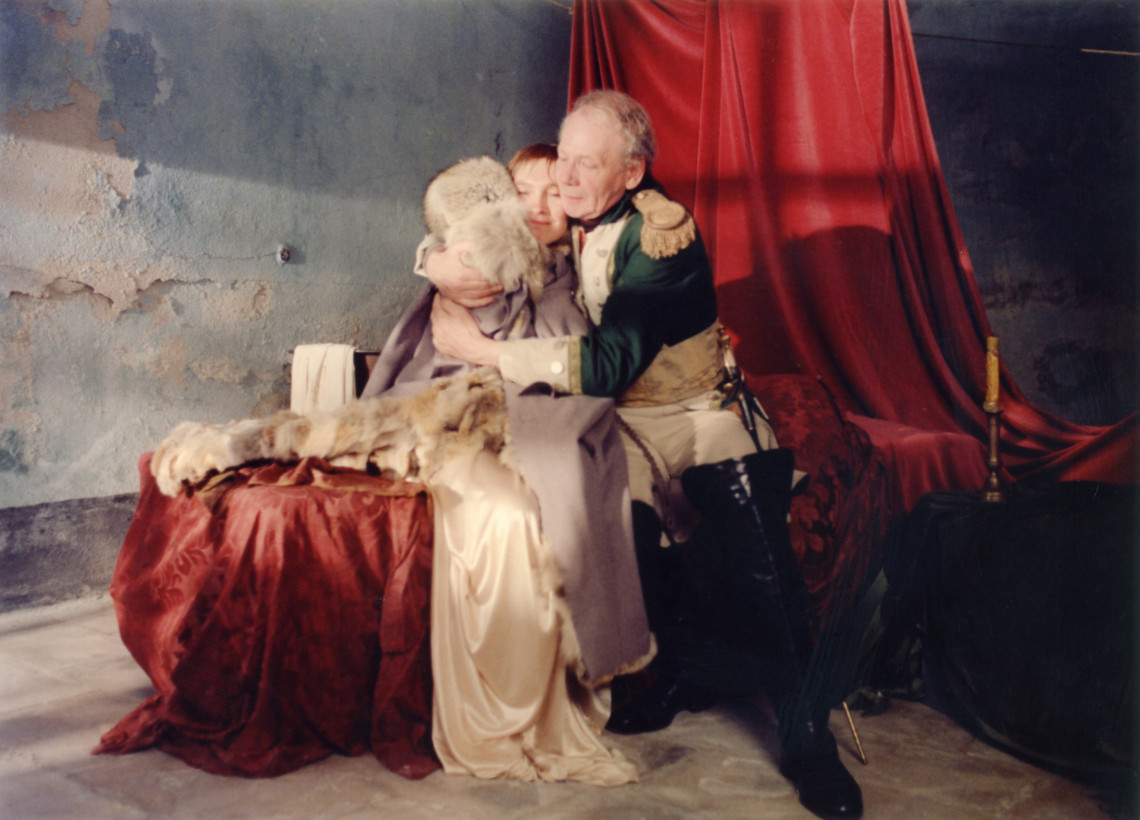Eric Rohmer’s penchant for neorealist romantic comedies did not preclude the occasional aesthetic experiment. His Perceval le Gallois (1978), for example, remains one of the most startlingly experimental features of the 1970s, pushing realism into the realm of the abstract by rendering the film in the style of period-appropriate medieval scrolls. Another one of his departures of that decade was the 1976 period piece The Marquise of O, an adaptation of Heinrich von Kleist’s 1808 novel about an Italian noblewoman (Edith Clever) who finds herself mysteriously pregnant, most likely by a Russian count’s rape. Set in Italy, the film nonetheless reflects von Kleist’s origins with its German dialogue, and Rohmer once again uses realistic techniques—subtle, naturalistic pans; and minimal blocking—to induce a state of cognitive dissonance in a viewer expecting a more classical style from a costume drama.
But Rohmer always had a formalist eye underneath his ostensibly minimal filmmaking, and The Marquise of O regularly juxtaposes his unornamented style with overt nods to Romantic painting. Once again teamed with the great cinematographer Nestor Almendros, Rohmer frames early battle scenes as tableaux vivants, with Almendros’ expressive lighting lending an epic sweep to otherwise placid camerawork and banal depictions of the Marquise’s flight from her father’s overrun castle. When she and her retinue are set upon by rapacious Russian soldiers, the tangle of bodies pulling the woman to the ground resembles an action painting, albeit one tainted horribly by its context. And when the soldier’s leader, the Count (Bruno Ganz), intervenes and prevents the rape, he is framed in a low-angle medium close-up with a halo of light behind his head, presenting him as the noble savior despite being the enemy.
Just as Rohmer darkly alters the atmosphere over the shot of the soldiers converging on a target, however, so too does he suggest menace within the Count. A fade-out from the Count announcing that he will watch over the woman after she receives a sleep aid turns a chivalric statement into one of ignoble intent, as does a shot of him returning to her unconscious body and pausing with a mild quiver. The Count decamps the next morning with his men, but just as the Marquise’s lingering trauma starts to manifest as pregnancy symptoms, he reappears, mysteriously urging her father for her hand in marriage as soon as possible.
Rohmer’s early romances revolved around the fussy egotism of repressed men who attempted to find their perfect woman or, barring that, force a woman in their vicinity to live up to their ideals. Think the sanctimonious Catholic Jean-Louis from My Night at Maud’s (1969), with his rigid Madonna/whore complex; or the predatory ephebophile of Claire’s Knee (1970), who idealizes the girl he targets. The Count can be placed among such individuals, obviously violating the Marquise in her drugged sleep, then returning half-penitent to argue for her hand. If Rohmer’s contemporary male protagonists struggle to square their traditional upbringing with an era of sexual liberation, the Count is the sort of person who passed down their narrow views of propriety, crafting a torturous logic in which he can forcibly have sex with her, then need her loyalty because they had sex.
Though it forgoes melodrama for muted, naturalistic performances, Rohmer’s film captures the social traps laid for women of the time better than most of the innumerable period pieces structured around the same theme. While writing for Cahiers du cinéma, Rohmer was one of the most devout champions of Roberto Rossellini, and The Marquise of O bears resemblance to the neorealist master’s later historical films, such as The Taking of Power of Louis XVI (1966) and Blaise Pascal (1972). These films perpetuate and subvert both naturalism and the notion of objective history with keen observation and a wellspring of humanism that adds intimacy to the arch remove of stark style and historicity. The women in Rohmer’s present have the social freedom and mental fortitude to dismantle the boxes into which men want to place them, but the Marquise has no such freedom, and in a filmography filled with ambivalent romantic compromises, the vision of forced happiness that closes this movie may be his most profoundly unsettling.
If you’re interesting in watching The Marquise of O on Fandor, use your Movie Mezzanine coupon for an exclusive discount and access to a breathtaking library of cinema!






















One thought on “Spotlight on Fandor: “The Marquise of O””
Of course, Rohmer also uses the story to make another historical point: the Fall of Berlin in 1945 and the Soviet occupation, during which many Russian soldiers raped many women.